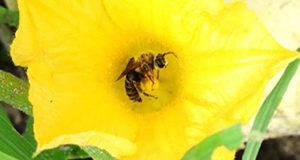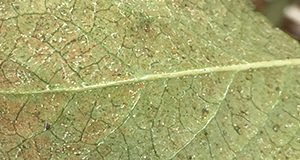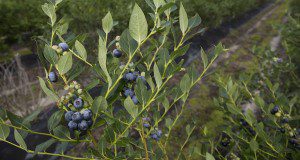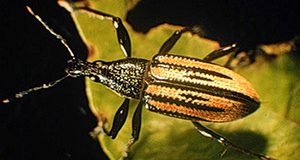Squash and pumpkin (Cucurbita spp.) are economically significant crops in Florida with over 7,900 acres in production and an estimated value of $35,412,000. Without insect pollination, however, crop yields for zucchini, crookneck, spaghetti, butternut and the rest of the large and delectable crew of squash and pumpkin species grown in Florida would be low to nonexistent. This 7-page fact sheet written by Rachel E. Mallinger and Oscar E. Liburd and published by the UF/IFAS Entomology and Nematology Department explains the pollination biology and requirements for squash and pumpkin, describes the signs and causes of poor pollination, and provides recommendations for improving pollination of these crops in Florida.
https://edis.ifas.ufl.edu/in1311
Tag: Oscar E. Liburd
Chilli Thrips on Blueberries in Florida
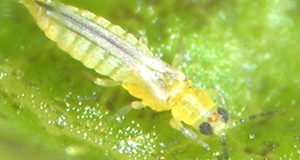
Chilli thrips, (Scirtothrips dorsalis Hood; Thysanoptera: Thripidae), is an economically important pest of vegetable, fruit, and ornamental crops throughout Asia, Africa, Oceania, the Caribbean, and some parts of South America and is an invasive pest in several US states. Chilli thrips were first observed in Florida in 1991. It was first recorded in blueberries in Hernando, Pasco and Sumter counties in July of 2008. This 4-page fact sheet written by Oscar E. Liburd, Babu R. Panthi, and Douglas A. Phillips and published by the UF/IFAS Entomology and Nematology Department discusses the life cycle of the chilli thrips, plant damage it causes, and management recommendations for chilli thrips in blueberries in Florida.
https://edis.ifas.ufl.edu/in1298
Mite Pests of Southern Highbush Blueberry in Florida
This 4-page document discusses life cycles, damage, monitoring, and management of southern red mites and false spider mites in southern highbush blueberries. Written by Oscar E. Liburd, Lorena Lopez, and Doug Phillips, and published by the UF/IFAS Entomology and Nematology Department, June 2020.
https://edis.ifas.ufl.edu/in1284
Calendar for Southern Highbush Blueberry Management in Florida
Southern highbush blueberries (SHB) are commercially grown throughout Florida in both deciduous and evergreen systems. This calendar addresses general management requirements on a monthly basis for conventional (nonorganic) systems and should be used in coordination with other UF/IFAS EDIS publications. This new 7-page article, published by the UF/IFAS Horticultural Sciences Department, was written by Douglas A. Phillips, Jeffrey G. Williamson, Philip F. Harmon, Oscar E. Liburd, and Peter J. Dittmar.
https://edis.ifas.ufl.edu/hs1363
Diaprepes Root Weevil on Southern Highbush Blueberry in Florida
Citrus root weevil, Diaprepes abbreviatus (Linnaeus) is a destructive pest on citrus trees. It is now becoming a significant pest on blueberry in central Florida, at times causing major damage to blueberry bushes that are more than two years old. This 3-page fact sheet written by Douglas A. Phillips, Oscar E. Liburd, and Larry W. Duncan and published by the UF/IFAS Entomology and Nematology Department will educate blueberry growers on how to monitor, identify, and control citrus root weevil.
http://edis.ifas.ufl.edu/in1241
2016 Florida Blueberry Integrated Pest Management Guide
This 37-page fact sheet provides extensive information about integrated pest management for growing blueberry plants in Florida. Writteny by Jeffrey G. Williamson, Philip F. Harmon, Oscar E. Liburd, and Peter Dittmar and published by the Horticultural Sciences Department.
http://edis.ifas.ufl.edu/hs380
Spotted Wing Drosophila in Florida Berry Culture
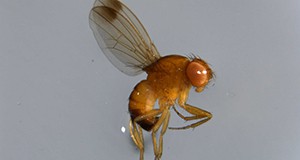
Spotted wing drosophila, Drosophila suzukii (Matsumura) (Diptera: Drosophilidae), is an invasive pest that was introduced into Florida in 2009. Spotted wing drosophila survives well under Florida’s climatic conditions. In 2014, losses to berry crops in Florida were estimated at $35 million. Losses are due to maggot-infested fruit, which is unacceptable for the fresh berry market, and puncture holes in the fruit made by egg-laying females. The holes lead to secondary infection by fungal and bacterial pathogens. This 4-page fact sheet written by Lindsy E. Iglesias, James F. Price, Craig R. Roubos, Justin M. Renkema, and Oscar E. Liburd and published by the Department of Entomology and Nematology describes the flies and some strategies to identify them and manage them in berry operations.
http://edis.ifas.ufl.edu/in839
Yellowmargined Leaf Beetle: A Pest of Cole Crops
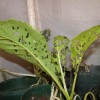 The yellowmargined leaf beetle is a pest of cole or cruciferous crops that is native to South America. Since first reported in Mobile, Alabama, in 1947, the beetle has spread throughout the Gulf Coast from Texas to Florida and up into Georgia and North Carolina. It has also been reported from Illinois and California. Not considered a major pest in conventionally grown cruciferous crops because it is susceptible to a wide range of insecticides, it poses a significant threat to the growing organic industry in the southeastern United States. It is a particular problem on Asian greens such as mizuna, mibuna, and napa cabbage, as well as on other high-value cruciferous crops like turnip, mustard, and watercress. This 4-page fact sheet was written by Elena M. Rhodes and and Oscar E. Liburd, and published by the UF Department of Entomology and Nematology, September 2014.
The yellowmargined leaf beetle is a pest of cole or cruciferous crops that is native to South America. Since first reported in Mobile, Alabama, in 1947, the beetle has spread throughout the Gulf Coast from Texas to Florida and up into Georgia and North Carolina. It has also been reported from Illinois and California. Not considered a major pest in conventionally grown cruciferous crops because it is susceptible to a wide range of insecticides, it poses a significant threat to the growing organic industry in the southeastern United States. It is a particular problem on Asian greens such as mizuna, mibuna, and napa cabbage, as well as on other high-value cruciferous crops like turnip, mustard, and watercress. This 4-page fact sheet was written by Elena M. Rhodes and and Oscar E. Liburd, and published by the UF Department of Entomology and Nematology, September 2014.
http://edis.ifas.ufl.edu/in1049
Flower Thrips in Blackberries in Florida
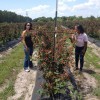 Blackberry production is a small but growing industry in the state of Florida. Their numerous health benefits make them a good choice for Florida growers who want to diversify from traditional crops such as strawberries. Several potential pest insects and mites have been found on blackberries in Florida, but the two most likely to become key pests are stink bugs and flower thrips. This 3-page fact sheet provides information on flower thrips identification, monitoring and management for blackberries. Written by Oscar E. Liburd, Elena M. Rhodes, Elke Weibelzahl, and Sara E. Brennan, and published by the UF Department of Entomology and Nematology, November 2014.
Blackberry production is a small but growing industry in the state of Florida. Their numerous health benefits make them a good choice for Florida growers who want to diversify from traditional crops such as strawberries. Several potential pest insects and mites have been found on blackberries in Florida, but the two most likely to become key pests are stink bugs and flower thrips. This 3-page fact sheet provides information on flower thrips identification, monitoring and management for blackberries. Written by Oscar E. Liburd, Elena M. Rhodes, Elke Weibelzahl, and Sara E. Brennan, and published by the UF Department of Entomology and Nematology, November 2014.
http://edis.ifas.ufl.edu/in1060
A Parasitoid Wasp Cotesia congregata (Say) (Insecta: Hymenoptera: Braconidae
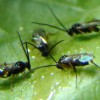 This species of Cotesia has been widely used as a model system in insect physiology. It has also been used to examine insect learning in host-parasitoid-plant interactions. It is an important natural enemy of the tobacco hornworm, a detrimental pest species that feeds on many plants in the Solanaceae (tobacco, pepper, tomato, etc.) family. This 5-page fact sheet was written by Christopher D. Crockett, Andrea Lucky, Oscar E. Liburd, and Karen M. Kester, and published by the UF Department of Entomology and Nematology, July 2014.
This species of Cotesia has been widely used as a model system in insect physiology. It has also been used to examine insect learning in host-parasitoid-plant interactions. It is an important natural enemy of the tobacco hornworm, a detrimental pest species that feeds on many plants in the Solanaceae (tobacco, pepper, tomato, etc.) family. This 5-page fact sheet was written by Christopher D. Crockett, Andrea Lucky, Oscar E. Liburd, and Karen M. Kester, and published by the UF Department of Entomology and Nematology, July 2014.
http://edis.ifas.ufl.edu/in1042
Spotted Wing Drosophila: Pest Management Recommendations for Southeastern Blueberries
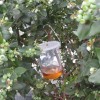 The spotted wing drosophila is a recently discovered invasive species native to parts of East Asia. It was first detected in the continental United States in California in 2008 and in Hillsborough County, Florida in 2009. Since then, the spotted wing drosophila has spread to over 28 counties in Florida. SWD is polyphagous, meaning it feeds on many different host plants, including most thin-skinned fruits. The major hosts of concern to the Florida agriculture industry are blueberries, strawberries, blackberries and grapes. This 5-page fact sheet was written by Oscar E. Liburd and Lindsy E. Iglesias, and published by the UF Department of Entomology and Nematology, June 2013.
The spotted wing drosophila is a recently discovered invasive species native to parts of East Asia. It was first detected in the continental United States in California in 2008 and in Hillsborough County, Florida in 2009. Since then, the spotted wing drosophila has spread to over 28 counties in Florida. SWD is polyphagous, meaning it feeds on many different host plants, including most thin-skinned fruits. The major hosts of concern to the Florida agriculture industry are blueberries, strawberries, blackberries and grapes. This 5-page fact sheet was written by Oscar E. Liburd and Lindsy E. Iglesias, and published by the UF Department of Entomology and Nematology, June 2013.
http://edis.ifas.ufl.edu/in998
2013 Florida Blueberry Integrated Pest Management Guide (HS1156/HS380)
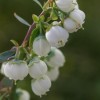 Recommendations are based on information from the manufacturer’s label and performance data from research and Extension field tests. This 31-page pest management guide was adapted for Florida by Jeffrey G. Williamson, Philip F. Harmon, Oscar E. Liburd, and Peter Dittmar, from the Southeast Regional Blueberry Integrated Management Guide, and published by the UF Department of Horticultural Sciences, November 2012.
Recommendations are based on information from the manufacturer’s label and performance data from research and Extension field tests. This 31-page pest management guide was adapted for Florida by Jeffrey G. Williamson, Philip F. Harmon, Oscar E. Liburd, and Peter Dittmar, from the Southeast Regional Blueberry Integrated Management Guide, and published by the UF Department of Horticultural Sciences, November 2012.
http://edis.ifas.ufl.edu/hs380
Cultivos en asocio, diversidad de cultivos y manejo integrado de plagas (ENY862S/IN932)
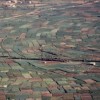 El cultivo en asocio (o cultivo intercalado) es una práctica en donde se siembran diversos cultivos en un mismo campo. Adicionalmente plantas que no son cultivos, tales como las malezas, cultivos rastreros o de cobertura, así como plantas del hábitat, se pueden combinar en el espacio y tiempo para influir en el número de plagas o artrópodos benéficos en un cultivo principal. This 7-page fact sheet was written by Hugh Smith y Oscar Liburd. Traducido por Ana Lucrecia MacVean, and published by the UF Department of Entomology and Nematology, June 2012.
El cultivo en asocio (o cultivo intercalado) es una práctica en donde se siembran diversos cultivos en un mismo campo. Adicionalmente plantas que no son cultivos, tales como las malezas, cultivos rastreros o de cobertura, así como plantas del hábitat, se pueden combinar en el espacio y tiempo para influir en el número de plagas o artrópodos benéficos en un cultivo principal. This 7-page fact sheet was written by Hugh Smith y Oscar Liburd. Traducido por Ana Lucrecia MacVean, and published by the UF Department of Entomology and Nematology, June 2012.
http://edis.ifas.ufl.edu/in932
A Stink Bug Euschistus quadrator Rolston (Insecta: Hemiptera: Pentatomidae) (EENY523/IN937)
 Euschistus quadrator, like other stink bugs, is highly polyphagous. It is found on weeds such as clover, vetch and other legumes. It feeds on many different crops, though it is primarily found on cotton, soybeans and corn. Stink bugs cause injury to various fruits and vegetables by feeding, resulting in significant quality and yield loss. They have piercing-sucking mouthparts and most feed primarily on fruits and seeds. This 5-page fact sheet was written by Sara A. Brennan, Joseph Eger, and Oscar E. Liburd, and published by the UF Department of Entomology and Nematology, June 2012.
Euschistus quadrator, like other stink bugs, is highly polyphagous. It is found on weeds such as clover, vetch and other legumes. It feeds on many different crops, though it is primarily found on cotton, soybeans and corn. Stink bugs cause injury to various fruits and vegetables by feeding, resulting in significant quality and yield loss. They have piercing-sucking mouthparts and most feed primarily on fruits and seeds. This 5-page fact sheet was written by Sara A. Brennan, Joseph Eger, and Oscar E. Liburd, and published by the UF Department of Entomology and Nematology, June 2012.
http://edis.ifas.ufl.edu/in937
Intercropping, Crop Diversity and Pest Management (ENY862/IN922)
Growing different crops in the same field and/or planting different crops on the same plot during different times of the year can reduce insect pest populations, increasing beneficial insects, and suppress weeds. In addition, non-crop plants such as weeds, cover crops, and habitat plantings can be combined in space and time to influence numbers of pest and beneficial arthropods on the main crop. This 7-page fact sheet was written by Hugh A. Smith and Oscar E. Liburd, and published by the UF Department of Entomology and Nematology, February 2012.
http://edis.ifas.ufl.edu/in922
Recommendations for Management of Whiteflies, Whitefly-transmitted viruses, and Insecticide Resistance for Production of Cucurbit Crops in Florida (EENY478/IN871)
 Until recently, squash has been the only cucurbit crop seriously affected by the B biotype of the sweetpotato whitefly, also known as the silverleaf whitefly, because of the silverleaf disorder induced by feeding of the immature stages (nymphs). However, three viruses transmitted by the whitefly have been identified in watermelon, muskmelon, and squash in Florida since 2004, making whitefly management a priority for most cucurbits. This 8-page fact sheet details the current UF/IFAS recommendations for managing whitefly-transmitted viruses and for delaying the development of resistance to insecticides in the whitefly vector. Published by the UF Department of Entomology and Nematology, July 2011.
Until recently, squash has been the only cucurbit crop seriously affected by the B biotype of the sweetpotato whitefly, also known as the silverleaf whitefly, because of the silverleaf disorder induced by feeding of the immature stages (nymphs). However, three viruses transmitted by the whitefly have been identified in watermelon, muskmelon, and squash in Florida since 2004, making whitefly management a priority for most cucurbits. This 8-page fact sheet details the current UF/IFAS recommendations for managing whitefly-transmitted viruses and for delaying the development of resistance to insecticides in the whitefly vector. Published by the UF Department of Entomology and Nematology, July 2011.
http://edis.ifas.ufl.edu/in871
ENY858/IN844 Blueberry Bud Mite, Acalitus vaccinii (Keifer) on Southern Highbush Blueberry in Florida
ENY858, a 3-page illustrated fact sheet by Elke Weibelzahl and Oscar E. Liburd, provides a guideline for the recognition and control of this mite that is an important pest of lowbush, highbush, and rabbiteye blueberries in Florida. Includes references. Published by the UF Department of Entomology and Nematology, January 2010.
http://edis.ifas.ufl.edu/in844
HS1156/HS380 Florida Blueberry Integrated Pest Management Guide
HS-1156 is a 35-page illustrated guide adapted for Florida from the Southeast Regional Blueberry Integrated Management Guide by Jeffrey G. Williamson, Philip F. Harmon and Oscar E. Liburd. Primarily tabular in format, it also includes links to additional resources, text descriptions of key pests by stages of flower bud development, and an illustrated guide to recognized stages. Published by the UF Department of Horticultural Science, March 2008.
http://edis.ifas.ufl.edu/HS380
ENY-847/IN761 Biology and Management of Aphids in Sustainable Field Production of Cucurbits
ENY-847, a 3-page illustrated fact-sheet by O. E. Liburd and T. W. Nyoike, provides information about aphids, their biology and lifecycle, damage, monitoring and management strategies for sustainable agriculture. Includes references. Published by UF Department of Entomology and Nematology, January 2008.
http://edis.ifas.ufl.edu/IN761
